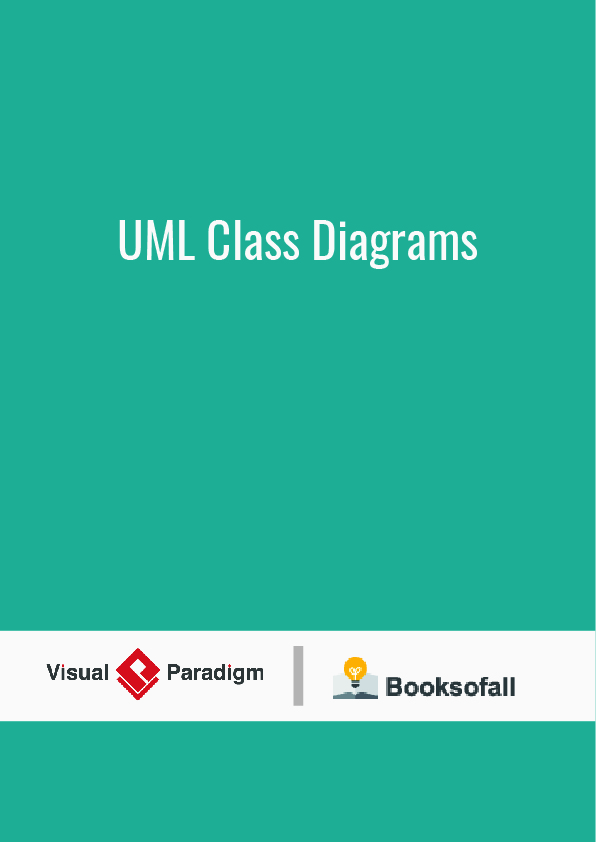The Unified Modeling Language (UML) is a general-purpose, developmental, modeling language in the field of software engineering that is intended to provide a standard way to visualize the design of a system.
The creation of UML was originally motivated by the desire to standardize the disparate notational systems and approaches to software design. It was developed at Rational Software in 1994–1995, with further development led by them through 1996.
In 1997, UML was adopted as a standard by the Object Management Group (OMG), and has been managed by this organization ever since. In 2005, UML was also published by the International Organization for Standardization (ISO) as an approved ISO standard. Since then the standard has been periodically revised to cover the latest revision of UML. In software engineering, most practitioners do not use UML, but instead produce informal hand drawn diagrams; these diagrams, however, often include elements from UML.
In software engineering, a class diagram in the Unified Modeling Language (UML) is a type of static structure diagram that describes the structure of a system by showing the system’s classes, their attributes, operations (or methods), and the relationships among objects.
The class diagram is the main building block of object-oriented modeling. It is used for general conceptual modeling of the structure of the application, and for detailed modeling, translating the models into programming code. Class diagrams can also be used for data modeling.[1] The classes in a class diagram represent both the main elements, interactions in the application, and the classes to be programmed.
In the diagram, classes are represented with boxes that contain three compartments:
- The top compartment contains the name of the class. It is printed in bold and centered, and the first letter is capitalized.
- The middle compartment contains the attributes of the class. They are left-aligned and the first letter is lowercase.
- The bottom compartment contains the operations the class can execute. They are also left-aligned and the first letter is lowercase.
In the design of a system, a number of classes are identified and grouped together in a class diagram that helps to determine the static relations between them. In detailed modeling, the classes of the conceptual design are often split into subclasses.
In order to further describe the behavior of systems, these class diagrams can be complemented by a state diagram or UML state machine.
A relationship is a general term covering the specific types of logical connections found on class and object diagrams. UML defines the following relationships:
Instance-level relationships
Dependency
A dependency is a type of association where there is a semantic connection between dependent and independent model elements.[6] It exists between two elements if changes to the definition of one element (the server or target) may cause changes to the other (the client or source). This association is uni-directional. A dependency is displayed as a dashed line with an open arrow that points from the client to the supplier.
Association
An association represents a family of links. A binary association (with two ends) is normally represented as a line. An association can link any number of classes. An association with three links is called a ternary association. An association can be named, and the ends of an association can be adorned with role names, ownership indicators, multiplicity, visibility, and other properties.
There are four different types of association: bi-directional, uni-directional, aggregation (includes composition aggregation) and reflexive. Bi-directional and uni-directional associations are the most common ones.
For instance, a flight class is associated with a plane class bi-directionally. Association represents the static relationship shared among the objects of two classes.
Composition
The UML representation of a composition relationship shows composition as a filled diamond shape on the containing class end of the lines that connect contained class(es) to the containing class.
Differences between Composition and Aggregation
Composition relationship
1. When attempting to represent real-world whole-part relationships, e.g. an engine is a part of a car.
2. When the container is destroyed, the contents are also destroyed, e.g. a university and its departments.
Aggregation relationship
1. When representing a software or database relationship, e.g. car model engine ENG01 is part of a car model CM01, as the engine, ENG01, maybe also part of a different car model.
2. When the container is destroyed, the contents are usually not destroyed, e.g. a professor has students; when the professor dies the students do not die along with him.
Thus the aggregation relationship is often “catalog” containment to distinguish it from the composition’s “physical” containment.











